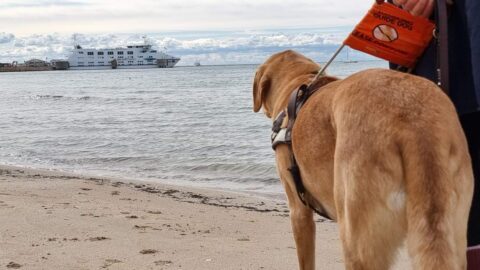Tourism Sector
Long Journeys on Public Transport
Time to read: Approximately 2 minutes
There is a lot for a Handler to consider when taking long journeys with their Assistance Dog to ensure that the journey will be comfortable for them and their dog. We have listed below some ways that providers can help in the planning process and during the journey itself.

Providers can help Handlers by:
- Explaining specifically anything that the Handler ought to be aware of, such as boarding, disembarking and any layovers. Then, asking exactly what assistance the Handler requires.
- Where a trip relates to an airport, giving the Handler specific information on the location of animal relief areas and whether they are before or after security.
- Where a trip involves a long train or bus journey, letting the Handler know when toilet stops will be provided for their Assistance Dog and what surface they will be. Some dogs prefer certain surfaces, so if their preferred surface is unavailable, it will be important that the Handler has time to train their dog in advance.
- Where the trip involves a cruise:
-
- Communicating to the Handler, at the booking stage, what toileting surface is currently used on board and whether the Handler can post their dog’s preferred surface to the cruise liner in advance of their trip.
- Ensuring Handlers are aware of all emergency procedures for themselves and their dogs.
- Informing all passengers that there is an Assistance Dog on board, and advising of all protocols such as the principles covered in our ‘Assistance Dog Interaction Principles’ Checklist. Specifically, passengers should be made aware that Assistance Dogs on board perform a pivotal role for their Handler, and that as such, the dog must not be interacted with or distracted in any way or at any time. It is helpful to Handlers if staff can reinforce this throughout the journey so Handlers do not carry the burden themselves.
- Orienting Handlers to all facilities and making them aware of all activities.
- Informing Handlers of uneven or slippery surfaces, and of any obstacles on board.
- Training staff to ask Handlers what is required for the dog during their participation in an activity.
- Making sure Handlers are aware of the menu and providing any serving assistance required if it is a buffet.
-
These are the key areas that are important to a Handler on holidays:
